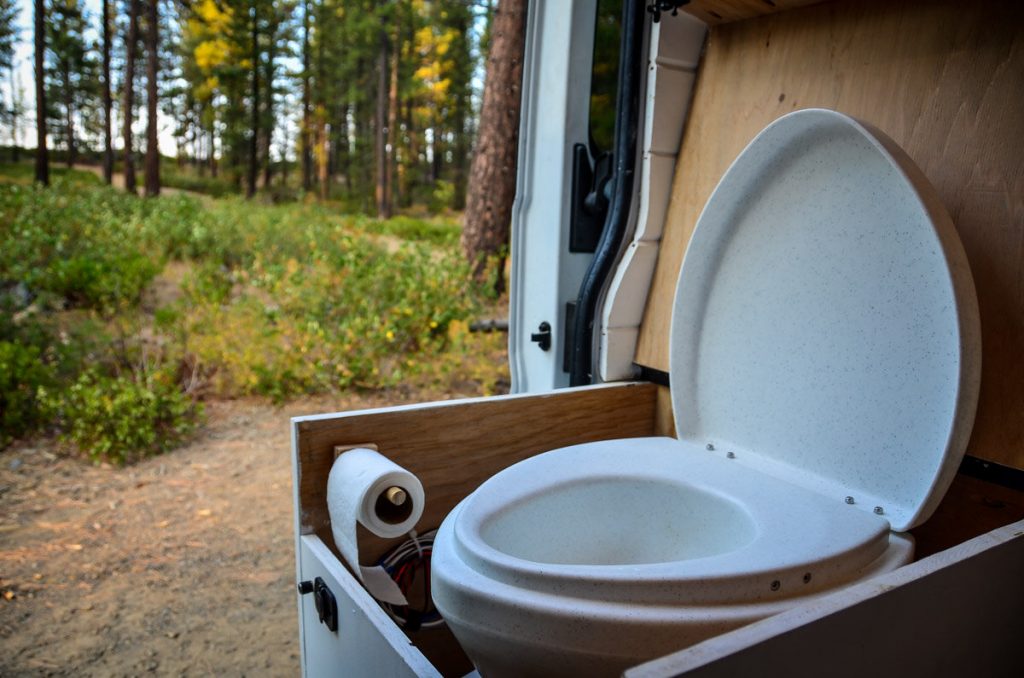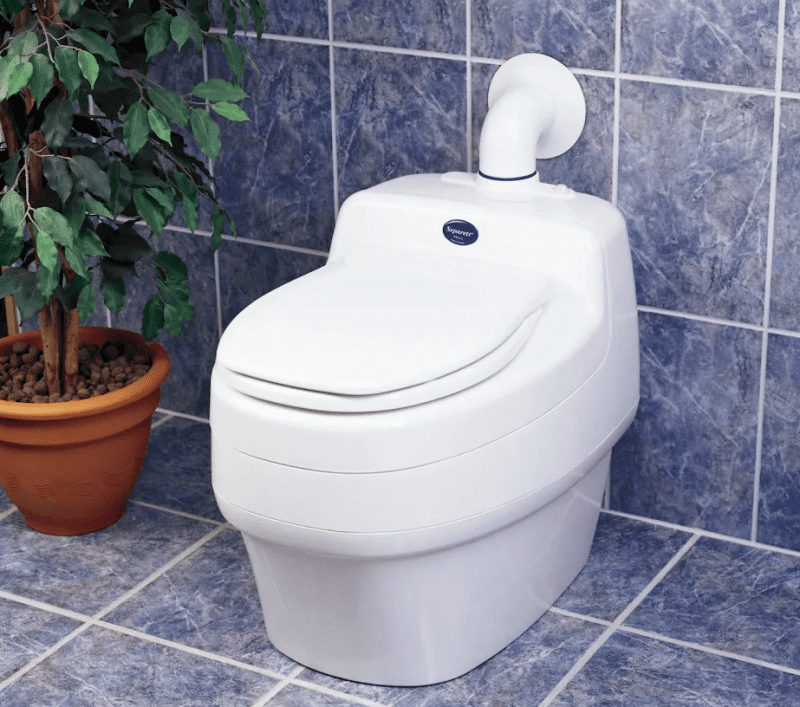Even if learning about the inner workings of a composting toilet makes you queasy, you should ignore your nausea because these toilets have numerous advantages, especially if you need a sanitary option for your off-grid home, RV, or boat. Flush and composting toilets arose as solutions to long-standing sanitation problems that contributed to disasters such as the Black Death and London’s Great Stink of 1858.
Toilets that compost have been around since the 1880s, while flush toilets became popular around the same time. Although flush toilets are standard in most newer homes, understanding how does a composting toilet works is beneficial.

How Does a Composting Toilet Work
The primary function of a composting toilet is to separate liquids from solids. Depending on the type of waste, it is either transferred to a specific basement room or taken outside. The liquid urine is moved to a separate room to evaporate. Aerobic species such as bacteria, fungi, compost worms, and other microscopic insects live in this evaporating chamber. Because of the nitrogen that these organisms add to the urine, it dries up faster. The extra nitrogen-containing liquid can then be used as a plant fertilizer.
Trash is separated into two chambers: solids and liquids. These are similar to the aerobic organisms found in the liquid waste chamber. In addition to the hydrogen, a trace amount of carbon material are added to this compartment.
Using absorbent material speeds up the decomposition of solid waste into dry compost. Such materials include wood chips, ash straws, and sawdust. Compost toilets necessitate careful monitoring of oxygen levels, aeration, temperature, carbon materials, and aerobic organisms. Each of these components must function adequately and actively for waste to be broken down.
Types of Composting Toilet
Self-contained composting toilet
These are commonly used in mobile homes, yachts, and cottages. The most compact ones can be taken anywhere. Basements, garages, and guest rooms are just a few examples of places where regular plumbing would be a major hassle to install. A hole or other means of releasing trapped gasses is usually included. Solids are composted in a detachable container, while liquids are drained away or controlled. These are the most commonly chosen alternatives.
Central system composting toilet
Central system composting toilets that use a septic tank are often termed split systems. This composting toilet requires a heated tank, making an outside installation impracticable. They are suitable for off-grid areas because they don’t need a constant power source.
Benefits of Using a Composting Toilet
Useable compost
When a storage locker or container is full, its contents are removed. When the system works properly, the soil will be sterile and rich in nutrients, much like compost, but there will be no odor or signs of human waste. It can be utilized in the same manner as regular dirt.
Getting an appropriately sized system for your needs will help you reduce how often you have to empty it. Allowing the system this time increases the likelihood of creating a high-quality byproduct for use in your garden or among your shrubs.
Very little smell
Contrary to common opinion, composting toilets sometimes produce less smell than standard toilets. Composting toilets reduce odor because solid waste is composted while liquid waste is flushed. Some setups even include a fan to increase airflow further. There is also no “splashback” of wastewater, which can happen with standard toilets.
Easy installation
Since these toilets don’t have to be linked to a sewage network, they can be set up wherever there is a suitable spot. You’ll find them most at home in national parks, farms, eco-tourism destinations, vacation cottages, and rural residences. Because they aren’t fixed, they can be relocated or removed without much trouble.
Less space
Composting toilets do not require running water; thus, they can be erected anywhere. In cramped quarters, this may be the most practical option. They can also be placed outside, with lightweight, affordable cover protection.
Save up on the usage of water
The only difference between a composting toilet and a regular toilet is that the former does not need a running water supply. They can conserve water by not flushing because that isn’t necessary. Therefore, they are the greatest option for places that lack access to clean water, such as remote villages. They’re great anywhere water pressure is weak or septic requirements are high.

Do You Have to Empty a Composting Toilet?
Composting toilets does require emptying, but the process isn’t nearly as unpleasant or unsanitary as you would fear. The majority of setups nowadays are made to be effortlessly emptied and cleaned. You’ll be emptying the liquid waste more frequently than the solid waste because composting takes longer.
Due to its high nitrogen concentration, this can be used as a plant fertilizer, making it a perfect option for environmentally friendly waste management. Just make sure to dilute it with water first. When getting rid of the trash, you can throw it in the ground or a compost bin.
What Is the Price of Installing a Composting Toilet?
Installation and the specific model of composting toilets both affect the final price tag. Composting toilets can cost anything from $50 for a basic model with no frills to several thousand dollars for high-end models with plenty of extra features or large-scale commercial installations.
Electric choices, heating components, or sensors are examples of add-ons that could result in a higher price tag. Anyone interested in installing their composting toilet can find a wealth of information online. Before installing the toilet, you’ll need to ensure a personal composting bin is set up outside.
Conclusion
Composting toilets is great for the environment for various reasons, so you should be proud of yourself if you use them. Another advantage is that modern composting toilets are simple to use. Since a flush toilet is the primary water user in a home and consumes 30% of all water, composting toilets are extremely advantageous in areas where water is a concern and droughts are frequent. But to utilize these toilets, you must know how does a composting toilet works, and that’s where our guide would help you.